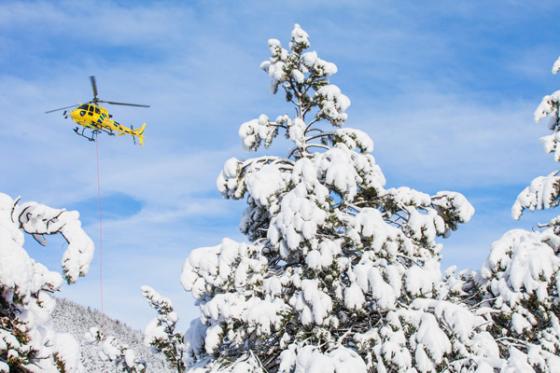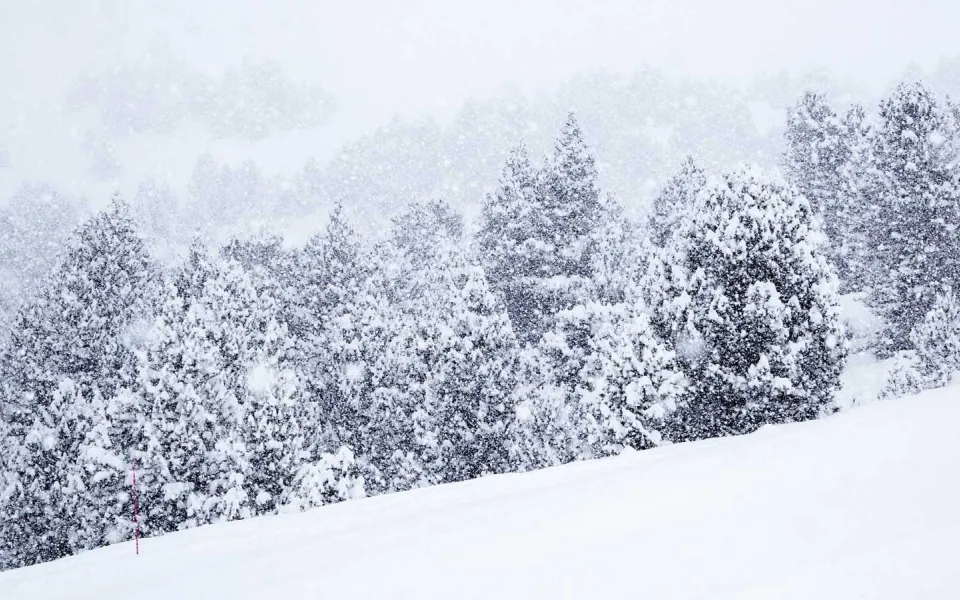
Snowfall in Andorra makes for a beautiful spectacle, with white ski slopes peeking out among the principality’s natural scenery. Heavy snowfall can, though, be what causes an avalanche in certain circumstances, which is why the authorities in Andorra have put in place a series of measures to control avalanches.
In this guide on avalanches, we’ll start with the most basic question when it comes to avalanches, which is: what is an avalanche exactly? The dictionary defines an avalanche as “a large amount of ice, snow and rock falling quickly down the side of a mountain”.
Below comes a breakdown of everything else you need to know about what is an avalanche, what causes an avalanche, how fast can avalanches travel, how mountain authorities prevent avalanches and how to survive an avalanche.
Types of avalanches
There isn’t just one type of avalanche. In fact, there are a few different forms of this phenomenon, as the general term of ‘avalanche’ covers quite distinct types of snowslide. The different categorisations can even represent a huge difference when it comes to answering the question of how fast can avalanches travel.
Most geologists would break it down to three main types of avalanches, which are slab avalanches, powder snow avalanches and wet snow avalanches. Each of these types of avalanches is discussed individually below.
Slab avalanches
Slab avalanches occur when there is a deposit of compressed snow and when a weaker layer of snow, or weaker slab of snow, breaks off from the rest and falls down the side of a mountain.
Powder snow avalanches
As the name suggests, a powder snow avalanche is made up of looser and thinner snow, rather than thick slabs. As for what causes an avalanche of this type, it starts from a single point where the snow is not well-bonded, and then the avalanche spreads downhill collecting more snow.
Wet snow avalanches
Wet snow avalanches take place with wetter snow, caused when the temperatures rise and when there is more water on the slopes as a result of melting. As the outer layers melt, the water floods the lower layers of snow and can disturb the stability of the snow. These types of avalanches are quite slow, typically travelling at around 20 miles per hour.
What causes an avalanche?
Now that we know what is an avalanche, at least in a general sense, the next question is to consider what triggers an avalanche to start. With each of the types outlined above, there can be different triggers, but the most important causes are:
- Earthquakes
- Significant changes in temperature
- Extraordinarily heavy snowfall
- Vibrations from machinery or construction
- Human activity
Fortunately, most of these potential triggers either don’t apply in Andorra and the Pyrenees or they are closely monitored by the Andorran authorities or by the experts in and around Grandvalira.
There is an organisation in Andorra called the Àrea de Conservació i Explotació de Carreteres (COEX) – which translates to the Roads Development and Conservation Body, in English. This body works with the latest technology, such as the Gazex avalanche control system, to either prevent avalanches from occurring in Andorra and its ski slopes or to carry out small, controlled avalanches, which prevent larger ones from happening. In total, COEX oversees 20 avalanche control zones in Andorra.
Can people cause avalanches?
You may be curious to know more about the final trigger named in the list of what causes an avalanche, that of human activity. And it is true that people can cause avalanches. This is almost always entirely accidental. In fact, it’s almost impossible to purposefully trigger an avalanche.
When human activity causes an avalanche, what usually happens is that someone in the mountains walks or skis or rides over a slab of ice with an underlying weak layer, which collapses. This can cause the overlaying snow to begin sliding and, depending on the circumstances, this could lead to a full avalanche.
How fast is an avalanche?
There is no one speed of an avalanche, as they can travel at different speeds depending on a few factors. It is estimated that slab avalanches, which are drier, can move at 60 to 80 miles per hour. On the other hand, the wet snow avalanches travel a lot slower, more like 20 miles per hour. In both cases, this is faster than you might imagine in your head, so you need to move out of the way quickly.
How to survive an avalanche?
If you are caught in an avalanche, there is a need to act fast and the first piece of advice is to try to outpace the avalanche and flee. If that isn’t possible, abandon your heaviest equipment and try to grab a nearby tree. If you do get stuck in the snow, experts advise practising swimming motions to move towards the surface and to cup your hands around your mouth to form an air pocket.
The good news for those planning a holiday in Andorra or the Pyrenees is that avalanches are not common in this part of the world. While it is still useful to know what is an avalanche and what causes an avalanche, skiers in Andorra can enjoy the slopes without having to worry about how to survive an avalanche. The authorities and bodies such as COEX are always learning more and more information about avalanches and are investing in the most state-of-the-art technology, meaning they can constantly reduce the risk.
